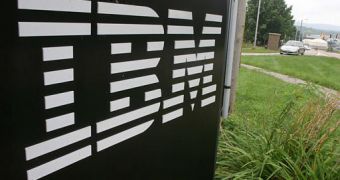As we already noted in many of our previous posts, solid-state drives are expected to become the next standard in the storage market. This is exactly why several manufacturers are dedicating a considerable part of their R&D resources to improve the current flash-based SSD technology, making it more accessible to consumers, and trying to provide higher performance levels. IBM is one of these manufacturers, and it has recently revealed that its “Project Quicksilver” is setting new records of data-transfer speeds for solid-state drives.
According to the company, the research project, which is currently underway at IBM's Hursley Lab in Hampshire and at the Almaden Research Center in California, combines flash solid-state drives with scalable storage virtualization technology.
The company informs that its project has seen an impressive development in recent testing, so much so that it has achieved a sustained rate of over one million IOPS (input/outputs per second), at a response time of under one millisecond (ms). This gives Quicksilver a boost of performance of 250 percent, with “less than fifth the response time,” compared with any other disk-based storage solution, the company believes. Furthermore, IBM says that the project takes up one-fifth of the space of equivalent conventional drives and that it uses “only 55 percent of the power and cooling.”
Talking about the Quicksilver project, Andy Monshaw, general manager for IBM system storage, said that the company “[was] integrating this technology with systems and applications so that companies can achieve real business value from solid-state disk.” He also said that Quicksilver was “a significant step forward in this comprehensive systems strategy.”
According to Monshaw, this project isn't thought in reference to any probable products that may come in the near future, but rather in order to reveal IBM's technical superiority over its direct competitors. “This is not about replacing today's hard disk drive with a new form factor, this is about having a complete, end-to-end systems approach," said Monshaw. “And that’s not something EMC, HP or Sun can match.” he added.

 14 DAY TRIAL //
14 DAY TRIAL //